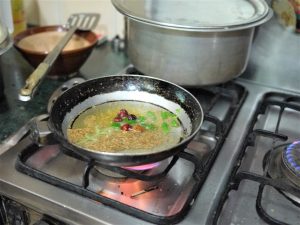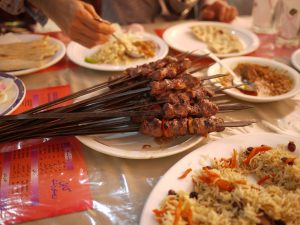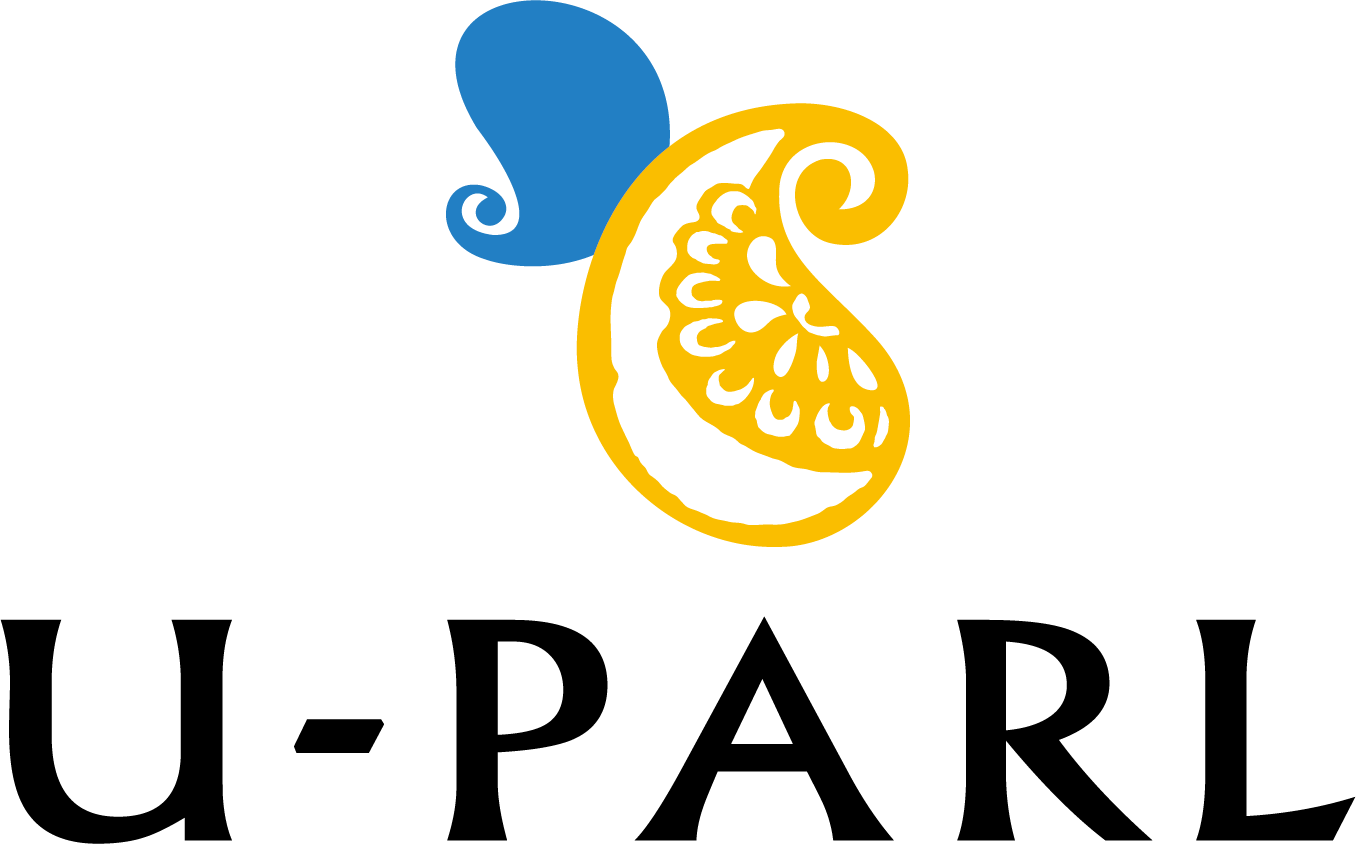Emiko SUNAGA (Project Research Fellow)
An April 2022 column written by Project Assistant Professor Yasuhiro TOKUHARA introduced Omar Khayyam.
The first thing that pops up in my mind when I hear the name Omar Khayyam is not an elegant four-line poem, nor the Iwanami Bunko series, but a lamb kebab plate I ate in Islamabad. You see, there is an Iranian restaurant with the same name, “Omar Khayyam,” on the main street of Islamabad’s business district. I had heard it was a good place to eat, so one evening a local friend took me there.
Omar Khayyam was born in Persia (now the Islamic Republic of Iran), but is very popular in Pakistan, and the menu at the restaurant had Persian poetry on it … I think. At the time, I was so happy to finally be able to eat out that some Persian poetry was the last thing of interest to me. The kebab was very delicious too.
When I tell people I do research in Pakistan, they ask, “Isn’t it dangerous out there?” “Don’t you feel tied down or restricted?” But in fact, I don’t recall ever feeling in danger there. What I find more inconvenient is that I cannot eat out alone while doing fieldwork.
Food in Pakistan is good, but it is not customary to eat alone. The culture of eating out is simply not developed. Conservative attitudes toward food are similar to those of neighbouring India, where people usually eat meals prepared at home by family members or hired cooks. Pakistani food is therefore eaten at every meal — breakfast, lunch, and dinner. School lunch and company cafeterias are a rare sight. For lunch, people either bring their own lunch box or have a light meal such as samosas and eat a proper meal when they return home.

Passionately cooked barbecues and Chinese cuisine is the most common variety of food you will see in restaurants in Pakistan. Recently, Italian food has been gaining popularity too. But what they all have in common is that people always come in groups or with the whole family. Fortunately, even large groups of relatives of up to 20 people do not have to wait and are quickly shown to their table. Family-oriented fast-food restaurants serving hamburgers and pizzas are also increasing in urban areas but “small independent diners” or “food stalls where you can have a quick meal” are few and far between. This makes it difficult for researchers (especially women) to have a meal alone while in the field.

Another question I often get asked is, “How can you live without alcohol and eat curry every day?” It is true that alcohol is very hard to come by and home cooking is all curry, but there are dozens of varieties, from soup-less vegetable stir-fry ones to overnight stewed beef soup, so you never get bored of it.
The talk about curry reminds me of the late Professor Emeritus Noboru KARASHIMA of the University of Tokyo, who was a leading scholar of South Asian studies. His specialty was history, but he also had a deep knowledge of curry and published many books on the subject, including Introduction to Curry Studies (1998) and Indian Curry Travelogue (2009). He passed away in 2015, and U-PARL organized his collection of nearly 1,000 volumes, which are now held in the Asian Research Library as the Noboru KARASHIMA Collection. Among them are many materials on South Asian food culture. The following is a partial list of materials held only at the Asian Research Library in Japan:
- Hindu cookery : vegetarian and non-vegetarian(1963)
- Sea-food dishes (1971)
- Delicious Bengali dishes (1975)
- Indian meat and fish cookery (1977)
- Charmaine Solomon’s Indian cooking for pleasure(1978)
- Indian cooking (1981)
(To search the Noboru KARASHIMA Collection, select “Advanced” on the main page of the University of Tokyo Library OPAC site, then select “Karashima Noboru Collection” from the drop-down menu next to the “Collection” search option.)
These materials include not only the use of ingredients and seasonings, but also many references to the culture and the environment in which food is eaten. The increasing trend of eating out has made us consider not only “what to eat” but also about “how to eat.”
February 27, 2024

